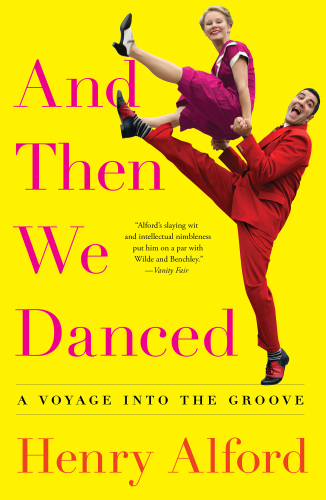
And Then We Danced
A Voyage into the Groove
کتاب های مرتبط
- اطلاعات
- نقد و بررسی
- دیدگاه کاربران
نقد و بررسی

Starred review from March 12, 2018
In his exhilarating book, Thurber Prize–winner Alford (Big Kiss) examines the various functions of dance in American culture through a combination of hilarious, self-deprecating narration and detailed reporting. Alford weaves in the biographies of seminal dancers and choreographers throughout, such as Savion Glover’s use of nostalgia in his work and Twyla Tharp’s repeated acts of rebellion against the dance canon, but he’s at his best describing how these functions have influenced his own life and those of everyday people (dance is a “fully immersive experience that allows us to meld with other people”). As a participatory journalist, Alford delves deep into the world of contact improv, and experiences the genre’s profound levels of intimacy; recounts his own use of dance to release pain and emotion (when he was upset, he brought his pain to dance classes and “thrashed it out”); and witnesses firsthand dance’s rehabilitative powers for seniors with dementia and Alzheimer’s. Packed with countless laugh-out-loud anecdotes (“If you get it right, the effect is that of a stork with a trick knee trying to take flight”) and insightful examinations of human interaction and culture, Alford’s latest will charm and intrigue dance enthusiasts of all kinds.

May 1, 2018
Humor writer (New Yorker, Vanity Fair) Alford takes readers on a entertaining romp through his various dance experiences, reflecting on dance themes and relating them with amusing anecdotes. Dance giants (Martha Graham, Twyla Tharp, Bob Fosse, Savion Glover) are discussed, as Alford relates an encounter with Tharp at a performance of The One Hundreds by the public (himself included). He includes quips, such as "I was the dancer equivalent of typos" along the way, and views dance through the themes of social entree, politics/rebellion, and emotion/release/physicality. Also considered are religion/spirituality, nostalgia, intimacy, and healing. Alford takes tap class, learns to partner in ballet, and performs contact improv. He mixes in history, giving context to dance styles. And because dance can sometimes be intimidating, Alford delves into challenging situations and shares his ups and downs with readers. He also visits Alzheimer's patients and dances with the group. Other topics covered include the 5Rhythms movement meditation practice, being a "living room dancer," and even deodorant. VERDICT Lots of fun here for the dancer in all of us.--Barbara Kundanis, Longmont P.L., CO
Copyright 2018 Library Journal, LLC Used with permission.

May 1, 2018
A humorist unites a neophyte's history of modern dance with his own unlikely dance memoir.Participatory journalist Alford (Would It Kill You To Stop Doing That?: A Modern Guide to Manners, 2010, etc.) ponders the social functions of dance in the 20th century, using his own late-blooming passion as a guide to inquiry. After a mostly danceless youth--excepting cotillion lessons and bouncing from New England socialite balls to Studio 54 as a teenager, plus coming out in New York in the 1980s--the author first began obsessing over dance in his mid-50s. Zumba lessons and late-night living room sessions proved gateway drugs to more esoteric dance pleasures, including the "ecstatic dance" of 5Rhythms and "contact improv" (think Pilobolus), all of which occasioned a lot of touching and feeling, followed by aches and injuries. Alford finds material by immersing himself in curious situations and then filleting his experiences into wry narratives. He recounts his faltering steps toward proficiency with withering self-deprecation: "To admit that you're a practitioner of the leaping arts is to open yourself to inspection on the fronts of economic status, carnality, taste, self-involvement, and body mass." Along the way, the author folds in facts and anecdotes about legends such as Gene Kelly, an aggressive pugilist, and the winsome Arthur Murray, whose mail-order instructional footprints tutored many aspiring rug-cutters in the dance-crazed 1920s. Opinionated overviews of famous dancers, notable performances, choreography choices, and outmoded dance idioms make it nearly impossible to read the book without a search window open for video evidence (see the grizzly bear, the bunny hug, the cakewalk, Isadora Duncan). A keen self-editor adept at meeting word counts for magazine stories, Alford makes efficient use of the long form, refracting histories and theories of dance through his own hilarious escapades and tracing the darker themes of reluctance, humiliation, and shame involved in the medium in an effort to make sense of why we dance and watch others dance.A standout in the monograph memoir subgenre, where subject guide meets personal essay.
COPYRIGHT(2018) Kirkus Reviews, ALL RIGHTS RESERVED.

























دیدگاه کاربران